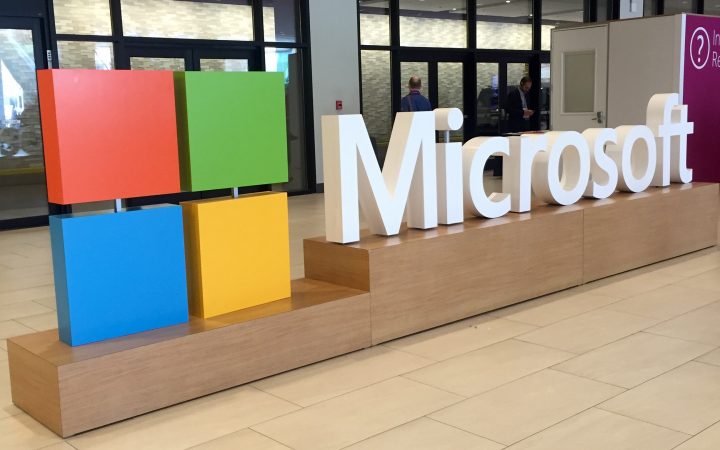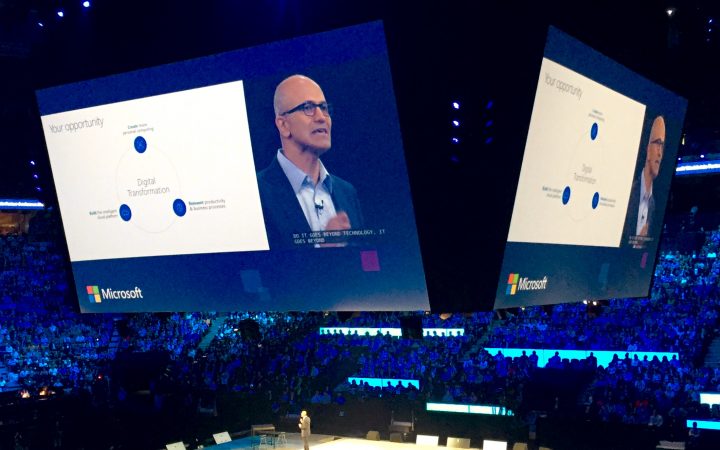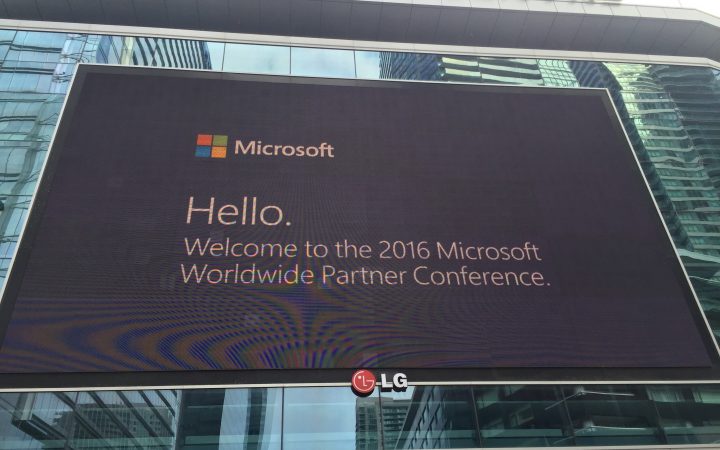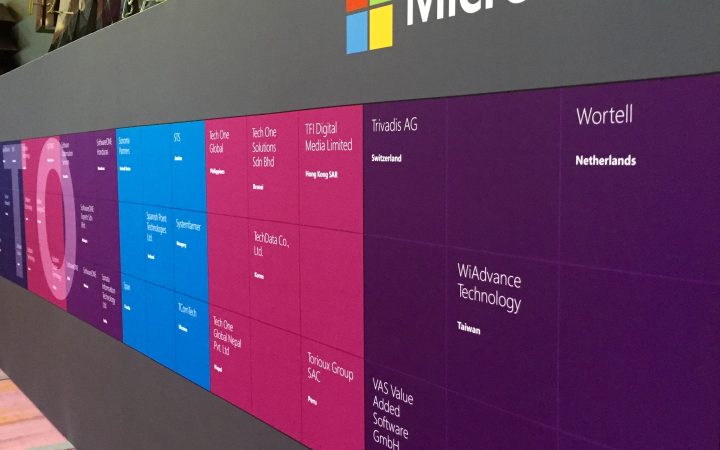Conclusions from Microsoft Worldwide Partner Conference 2016 in Toronto
It is during events like this that new ideas are born. The Microsoft conference in Toronto attracted over 15,000 attendees from 130 countries. It formed an amazing forum for discussing business, technology, the future of IT and customer needs. A lot of time was devoted to new ideas that are expected to change the way we will work, rest, entertain ourselves, travel and move goods 3 to 5 years from now. Based inherently on technology, such ideas will influence just about every sphere of our lives. The Toronto conference delivered a crash course in future technologies. Its conclusions can be summed up in one sentence: the future lies in bio-tech synergies. Indeed, even today, a few trends are already emerging:
Reinventing productivity
Changes in the way people collaborate, create things, share information and communicate will open up new opportunities for boosting productivity. Business processes are about to be revolutionized. They will be reinvented from scratch to take advantage of the potential that technologies offer. To what end? The business processes in place today in many enterprises have grown so far removed from the potential offered by today’s technologies, that going back to the drawing board and deploying them anew appears to be a whole lot easier and faster than retrofitting what is already there. Thus, the stage is set for a revolution, not an evolution.
Currency of the future
Business has changed dramatically over the last decade. The most precious commodity today is time, which is also something you can’t buy, amass or borrow. Increasingly, how fast we work and respond is a critical success factor in business. Aware of all that, Microsoft has been investing heavily in mobile cloud solutions, as evidenced by Office 2016. The Office suite rests on the three paradigms of mobility, collaboration and data. Mobility means working in any location, on any device and any operating system, including open source. Unrestricted mobile working is a massive change of approach on the part of Microsoft which has so far limited itself to proprietary solutions. Under the new approach, people and machines will collaborate independently of technological platforms, document formats and methods of data storage. Rather, they will openly share data through multiple applications and models. Will the company deliver on these announcements? Having spoken to colleagues at Microsoft about the individual goals for the coming years, it seems the overall commitment to change is very real.
Office 365
A key part of the new approach is not Office 2016, but in fact the Office 365 service. In conventional terms, the Office suite (Word, Excel, PowerPoint) is merely the tip of the iceberg – an interface for viewing and creating documents. The heart of the new system will be the Office 365 cloud, i.e. Azure. Yet, the idea of mobility, working in a cloud and across multiple devices raises a number of security concerns. Microsoft believes that the millions it has invested in security, multi-factor authorization and document protection with Rights Management will prove more effective in improving security and compliance with industrial standards of data processing centers than local IT security teams.
Intelligent cloud, Azure infrastructure
Putting all Microsoft products and services in a cloud is another game-changer. Azure will serve as a cloud platform for all solutions for Microsoft and its partner companies, including open source. Clients will no longer be charged license fees but rather for the use of applications. A variety of payment schemes will be available ranging from subscriptions to systems of pay per use of applications or infrastructure. The Company will gradually phase out the annual license model. Azure is available in 24 regions of the world. It offers full backup, complete security and user accessibility, delivers high KPIs and operates on a hyper-scale. One proof of Azure’s success has been the decision of Facebook to migrate all of its systems to the Azure-based version of Office 365, a development widely discussed behind the scenes at the Toronto conference.
Big Data and the Internet of Things (IoT)
Substantial amounts of data processed and collected from various devices as a basis for decision-making.
Gartner has forecast that more than 6.4 billion connected devices (IoT beacons) will be in use worldwide by the end of 2016. By 2020, this number will exceed 20.8 billion, creating a market that is worth fighting for. All data collection and processing will take place in the cloud. The cloud will receive data not only from regular applications and databases but also from IoT sensors. Microsoft is clearly making a strong commitment to such technologies. Does this mean it will manufacture beacons? Certainly not but it is likely to produce data control, data collection and data analysis software. This is clear based on its huge investment into the Azure IoT Suite, with its preconfigured solutions for remote monitoring, preventive maintenance and energy and telecommunications infrastructure management.
Personal computing
The processing of data on mobile and personal devices outside of the physical workplace.
The growth of the personal computing market is far exceeding industry expectations. The mobile workforce worldwide is set to skyrocket from 1.32 billion in 2014 (37% of the global workforce) to 1.75 billion in 2020 (approximately 42%). Microsoft has clearly spotted the trend, which is why it is offering solutions uncoupled from platforms, technologies and service delivery models. Everything is supposed to be on Azure. Cloud services, Office 365 and CRM Online will consolidate documents, information and data making them accessible at all times and in all locations.
Microsoft isn’t forgetting Windows though and continues to invest in its development. Meanwhile, it supports other platforms and is developing software that runs on Android, iOS and Linux. It is also investing in the Windows 10 platform to provide a consistent experience for PCs, tablets, smartphones, Xbox and HoloLens users. Even today, a Windows Phone may operate as a regular PC once a monitor and a keyboard have been connected. Software created for one device will work on another in Windows 10 Continuum.
Bring your own device
The performance of work tasks by employees on their own devices and, conversely, the personal use of company devices.
It is everyone’s wish to carry only a single laptop, tablet and smartphone rather than having separate sets of personal and company devices. This desire is also every IT department’s worst nightmare. What keeps all in-house IT experts awake at night are concerns over data security/theft and system access from various personal and company devices. Even today, 62% of small and medium-sized businesses in the US allow BYOD on their premises. By providing BYOD support, Microsoft perfectly fits into the latest trends.
Prior record supports the new approach
Microsoft’s quarterly report shows that the company is increasingly betting its money on cloud computing to be used primarily for business and additionally for general consumer purposes. Two thirds of Microsoft’s income comes from cloud-related services and technologies based mainly on subscriptions, i.e. regular payments from clients. As cloud revenues continue to climb, those from the sales of application licenses – previously the main source of the company’s income – are on the decline. On the other hand, Microsoft has plowed a lot of money into Azure. And yet, despite the enormous cost of developing and maintaining IT infrastructure, Microsoft manages last quarter to generate an astounding net income of USD 5.5 billion.
The path ahead
Little doubt remains that Microsoft has chosen the right path for its development. The choice of modern flexible solutions by this software giant, previously associated with older-generation solutions, may well prove to be a smart move. Microsoft has a huge potential resulting from years of working with top companies, understanding the inner workings of the corporate world and, its most valuable asset, enjoying the trust of its millions of customers. By putting its name on state-of-the-art flexible solutions, Microsoft will assure its customers of the security, stability and the compatibility of its legacy systems. This may convince fence-sitters to take the leap and transfer to more convenient cloud-based systems. This way, Microsoft will gain an advantage over smaller suppliers whose promising solutions have not yet had a chance to establish themselves on the market.
CEO Satya Nadella Keynote Speech at Microsoft WPC 2016: https://www.youtube.com/watch?v=HY1rgWoR72M
Various pictures





















DDonovan
New Microsoft priorities, my list of top technology levers:
– Cortana digital assistant (competitor to Apple Siri and Google Now)
– Skype language translation: Speaking in English only .
– Microsoft Perceptive Pixel display: multitouch displays for presentations, with support for pen and annotations
– Siena (beta): build mobile apps without coding (uses Excel syntax)
Windows 9 “Threshold” – not demoed
– Azure and Office 365. Office 365 is Microsoft’s fastest business ever with over 4 million paying customers worldwide
Rest was not so interesting
Adam T
Microsoft is pushing for cloud related revenue based on partners solutions. Smart. Since partners are much closer with a customers